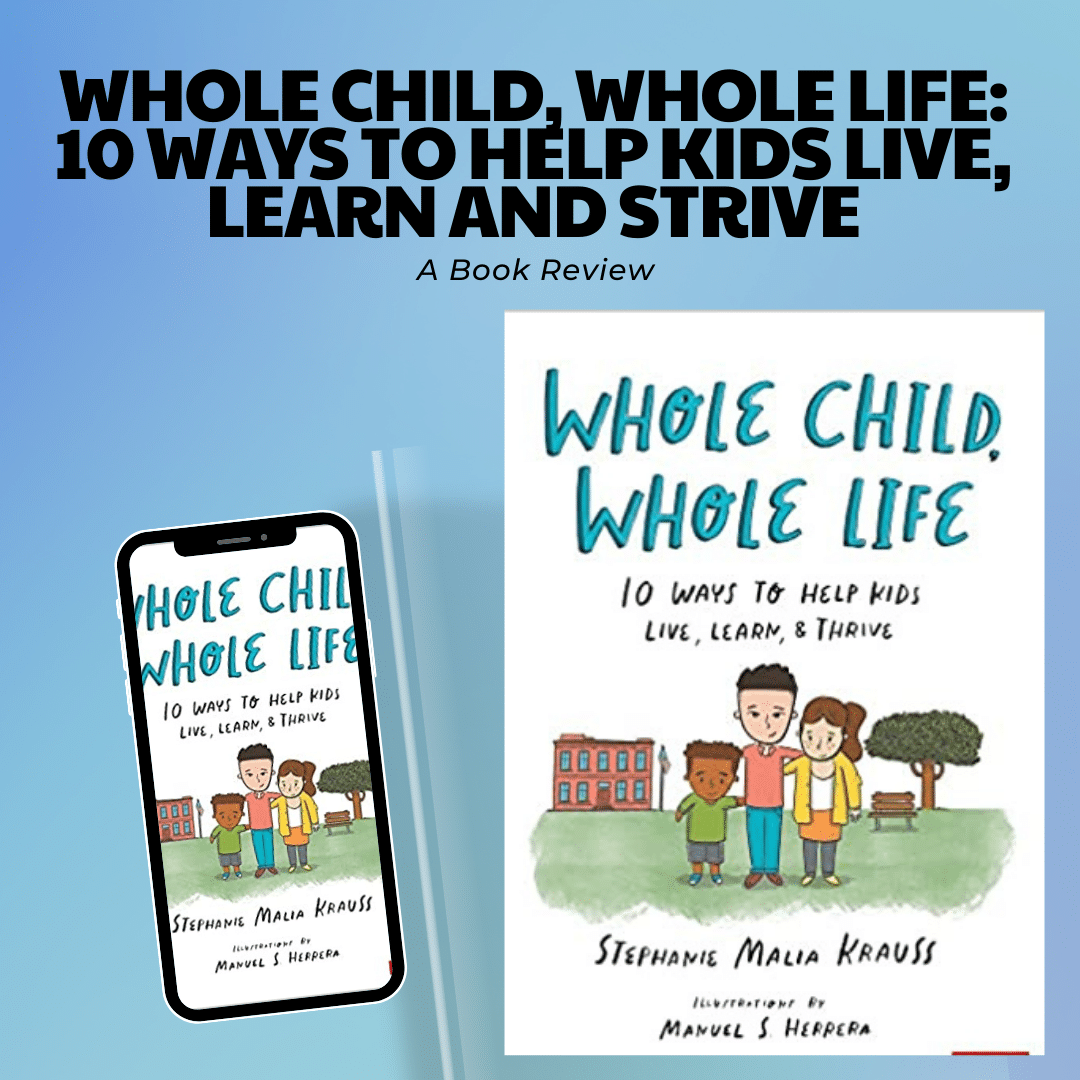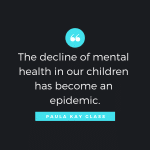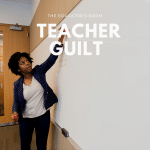Amidst the growing mental health crisis engulfing both our students and society, Stephanie Malia Krauss has written the book teachers have been asking for. Whole Child, Whole Life: 10 Ways to Help Kids Live, Learn and Strive is a 296-page mental health toolkit written to help teachers meet the diverse needs of each child.
Best of all? It’s written by someone who truly understands the struggles educators face today.
Background
Krauss is a former classroom teacher who was led to social work in an effort to reach those children who traditionally are left behind in the school system. She has since worked nationally on issues of youth well-being and readiness for the working world. Her research and work have led her to publish two books, Making It: What Today’s Kids Need in Tomorrow’s World and her May 20th release, Whole Child, Whole Life.
In celebration of the release, I had a thoughtful conversation with Stephanie about the book, what exactly a whole child is, and educator self-care in trying times.
Comprehensive Approach
Whole Child, Whole Life details a comprehensive approach to child development and how to support children throughout their developmental stages best.
The process of looking at the whole of a child begins with taking a holistic inventory of all facets of that child’s life and summative experiences. This goes beyond looking at the simple demographics of a child and examining the determinants surrounding them. This includes their relationships, physical and mental health, and unique external circumstances, including living conditions and family history.
Krauss makes a complicated task simple by providing the guide work as well as a printable template that helps you to paint a portrait of the whole child, separate from the sheets that summarize their educational history.
Stephanie herself has a deep understanding of the need for educators to have the whole picture of the children they teach. “I came into education and teaching by way of being a high school dropout myself. There are five of us in my family. We have a really complicated education story where each of us had very different paths in the same small town school district. I experienced firsthand the powerful impact of what happened when teachers saw the whole of me and understood: who I was, where I came from, who my family was and what that meant.” Stefanie shared.
Mental Health Month
This book’s release was in May, which was also Mental Health Month, underscores Stephanie’s understanding of how powerful her techniques can be in the hands of educators. As a former educator, she found herself often frustrated at the lack of resources available to help her fully support her students in the greatest capacity.
“I didn’t get any formal education, professional development, anything around mental health, or social work [sic] as a teacher. It was only school culture and behavior plans, that was as far as it went. It was really only in the context of discipline and behavior management to the end of, what do I need to do to get my kids to behave so that they can perform academically. And as a teacher, I was constantly struggling with this frustration internally.” Krauss recalled.
Her book recognizes the importance of nurturing social-emotional development in an educational system struggling amidst the chaos of daily life. “I can remember the day that I knew that I was gonna leave teaching to go to social work school. It was the day a student’s house burned down. I had nothing. I had no sense of how I could support my student, her family, or of how I could support my students. I had no training. And yet, here was this kid, who showed up to my class the day after her house burned down.” Stephanie recalled.
“There were things that were happening in the lives of my kids and their communities and their families that were impacting how they lived and learned that I was not skilled to support,” Klaus shared. She acknowledged that while some issues fell under the umbrella of mental health professions, it was also important for educators to have basic mental health training. “ What do you do when a kid experiences trauma? What do you do when a kid experiences grief? What do you do when a kid is struggling emotionally or mentally? It was so frustrating that I couldn’t support the kids that I was teaching,” said Krauss.
Practical Strategies
Luckily for educators, Whole Child Whole Life provides a wealth of practical mental health strategies that can be implemented in a classroom setting in a diverse range of situations. From grounding techniques to mindfulness practices, her strategies provide teachers with a toolkit for what Kauss calls “Emotional Wound Care.” These techniques empower teachers to create supportive environments to foster emotional well-being in all students.
Whole Child Whole Life also acknowledges the crucial role physical health plays in a child’s development. “What we see as behavior issues, do we even know? It could be a Vitamin D deficiency, or an Iron deficiency, or medication change,” Krauss says. The book emphasizes the importance of promoting a healthy lifestyle and encouraging children to get adequate sleep, proper nutrition, and regular exercise.
Krauss goes beyond advocating for increased community involvement and gives practical strategies that foster community engagement. “Kids need the communities that raise them,” says Klaus. She suggests schools forge a connection with local organizations and businesses to provide authentic, real-world learning experiences for students. From service-learning projects to mentorship programs, Krauss provides educators with an incredible opportunity to build a relationship with the community while also modeling for students “what readiness for adulthood actually requires.”
Whole Child Practices
In addition to prioritizing mental and physical health and wellness, and community involvement, Krauss shares seven other whole-life practices that can help students thrive in and out of school walls. These practices include: investing in personal interests, nurturing healthy relationships, embracing cultural identities, attending to the past and the present, being a force for good, acting with a 100-year mindset, and seeking awe and wonder.
Being ever aware of the teacher’s growing weary on the front line, Krauss reminds educators to remember the principles of her book apply not only to children. She encourages teachers to “look at this book [sic] as their own kind of personal inventory. Start with the basics. How am I sleeping? How am I eating? How am I moving? These are the foundation fundamental supports,” Klaus said.
Her 10 Life Practices are both timely and timeless and apply to all ages. Krauss hopes readers find her book a “guide book that you can keep coming back to. I really hope there is something deeply liberating about reading the book and being like these are the lights that we need to turn on in the life of a child [sic].”
Krauss delivers with her whole heart this insightful manuscript that will transform the way you understand your students. Whole Child, Whole Life is a treasure trove of knowledge for educators looking for ways to fight the mental health epidemic plaguing their classrooms. It’s a reminder of the questions that need to be asked of our students and the answers that create a student that’s both healthy and whole.







